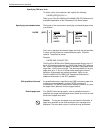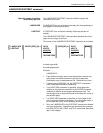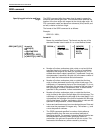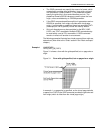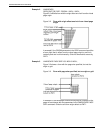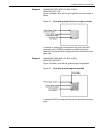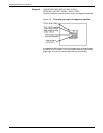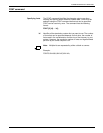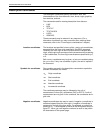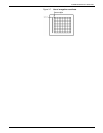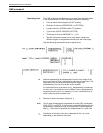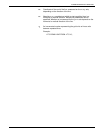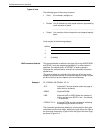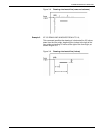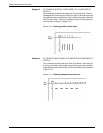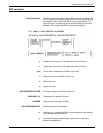
FORMS DESCRIPTION LANGUAGE
3-16 XEROX DOCUPRINT 96/DOCUPRINT 96MX LPS FORMS CREATION GUIDE
Description commands
The description commands specify the location, size, and
characteristics of the form elements: lines, boxes, logos, graphics,
form sections, and text.
The commands used for entering descriptive form data are:
• LINE
• BOX
• TEXT AT
• TEXT IN BOX
• LOGO
• GRAPHIC
These commands may be entered in any sequence. (For a
discussion of problems you may encounter when entering these
commands, refer to the “Forms layout considerations” chapter.)
Location coordinates The locations are specified in terms of the y and x axis coordinates,
measured from the form origin specified in the GRID command.
Generally the form origin is set to coincide with the variable data
origin, and the grid units correspond to the character and line spacing
of the variable data. The form origin coordinates are specified as y=0,
x=0.
Both x and y coordinates may be given, or just one coordinate along
the y or x axis. If only one coordinate is given, the axis is implied in
the command.
Symbols for coordinates Five symbols are used in the description commands to symbolize
different coordinates, as follows:
The coordinate parameter may be followed by the unit of
measurement: inches (IN), centimeters (CM), or DOTS. If units of
measurement are not given in the command, the coordinates are in
grid units.
Negative coordinates Negative coordinates also may be used. A negative y coordinate is
measured upward from the form origin. A negative x coordinate is
measured to the left of the form origin. For example, a vertical line
starting at x = -1 would appear to the left of the form grid as shown in
figure 3-7. When you use negative numbers, be sure to stay within
the boundaries of the system page.
c
o
Origin coordinate
c
s
Start coordinate
c
e
End coordinate
c
a
Absolute coordinate
c
i
Incremental coordinate



